
BIRMINGHAM SNOW HILL GALLERY 1
[Source: Terry Callaghan]
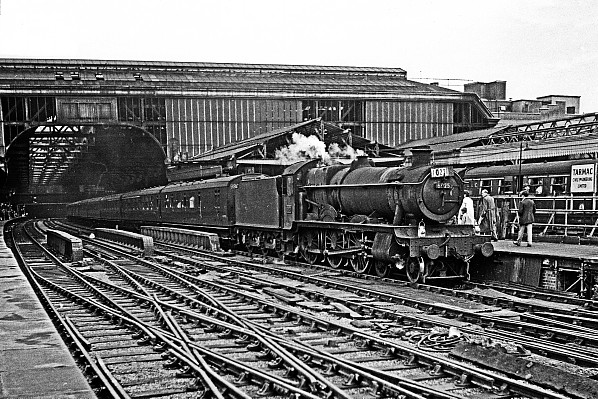 View southward, towards Snow Hill tunnel with the 13.11 Portsmouth to Wolverhampton arriving the train will have run via Eastleigh, Basingstoke and Oxford. The 4-6-0 No. 6925 'Hackness Hall' (built 8/41, named 8/46, withdrawn 11/64) will probably have worked throughout. Behind it is a more modern train, a DMU, on a working to Stourbridge Junction. This view gives a clue as to the state of the station buildings in 1964 with several sections of the bay platform canopy missing and some of the glazing from the trainshed also removed. Photo by Ben Brooksbank 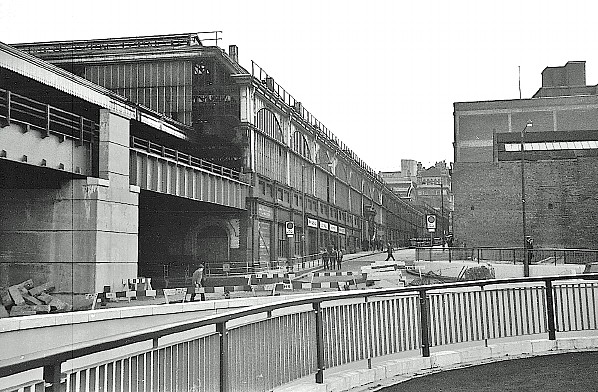
Snow Hill was built on an awkward site, confined between the parallel streets of Snow Hill and Livery Street (which is seen here in the centre). The architect of the 1912 station, Walter Armstrong, made good use of the topography to house ancillary activities such as parcels and luggage beneath the outer end of the station. Beneath the Great Charles Street bridge to the left can just be seen the subterranean secondary booking office, which after March 1967 was the only access to the station. Lettable shop accommodation was provided round the corner. Much of the wall to the right of the station survives as the boundary of the fourth station, opened in 1987.
Photo by Geoffrey Skelsey 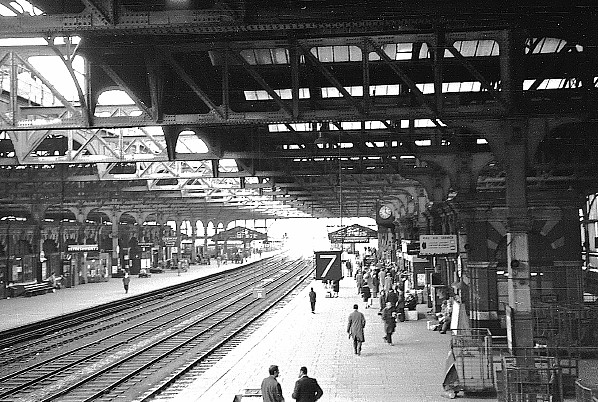 Looking north along platform 7 & 8 in early 1967 the station still throngs with passengers awaiting a southbound service in the final months of mainline services. BR BRUTE trolleys (British Rail Universal Trolley Equipment) are massed at the foot of the stairs used all over the system to convey mail, parcels, newspapers and a handy seat for the weary spotter Photo by Geoffrey Skelsey 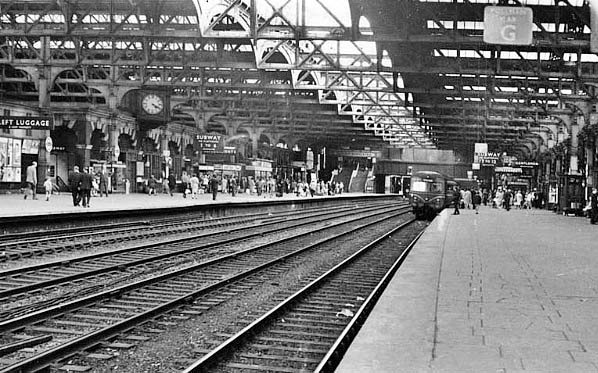 Looking along platform 5 towards Snow Hill tunnel with a Swindon built, latterly Class 120, DMU collecting passengers. With the amount of passenger milling round on the opposite platform a southbound service is more than likely due. Photo from the John Mann collection 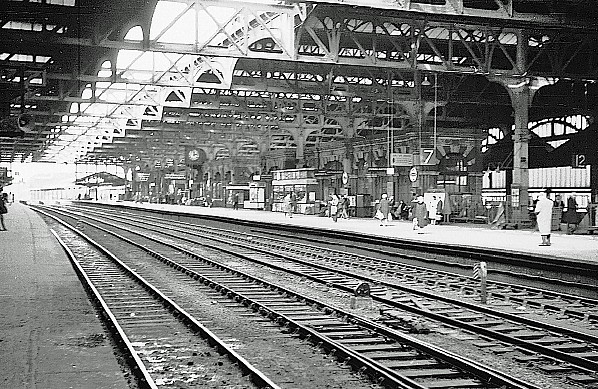 Platforms 5 and 6 (each through platform had two numbers) were the main down platforms, and in this view the up main platform 7 can also be seen beneath the clock, with the through lines passing between the platforms. After 1960 all through platforms were signalled reversibly, and at the end of the station’s life only one island was used on Sundays, thus economising on staffing. The new 1960 signal box was, unusually, located within the platform building on the left: this part of the premises had been damaged by wartime bombing. Photo by Geoffrey Skelsey 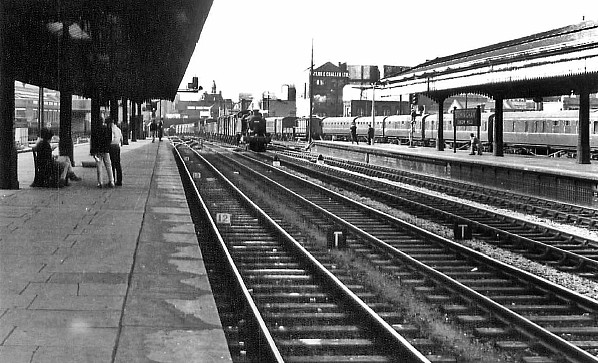
An ex-GWR 2-6-2T locomotive heads south with a mixed freight during the 1960s with a lengthy rake of coaching stock stabled on the Snow Hill side of the station. Photo from the John Mann collection 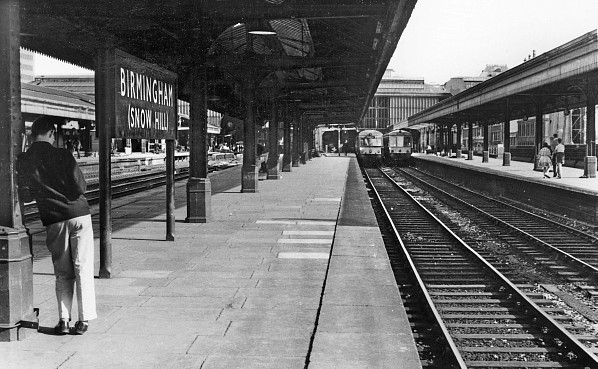
Looking south towards the Livery Street side bay platforms with a pair of DMU's awaiting departure. A local to Dudley and Wolverhampton are probable candidates. Photo from the John Mann collection 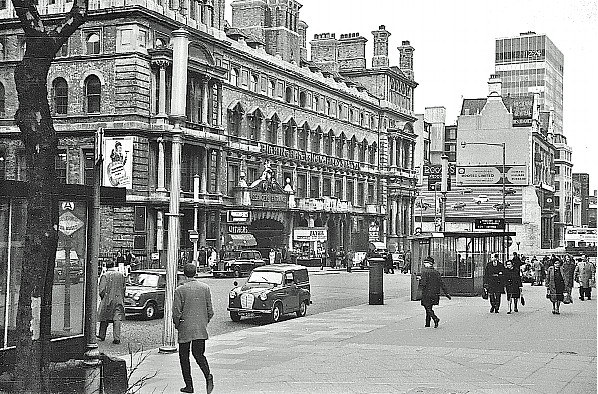
The Great Western Hotel in Colmore Row opened in 1868, although it was leased out and not directly operated by the railway company. Seemingly not very successful (the noise from trains beneath can’t have helped) it closed as early as 1906, and most was adapted as office space for the GWR. Large refreshment rooms and a first-class restaurant were, however, retained on the ground floor until 1940 when they were closed following bomb damage. In this view taken in 1967 the passenger entrance provided through the hotel in 1912 can be seen. Photo by Geoffrey Skelsey To see more pictures of Snow Hill click here
|
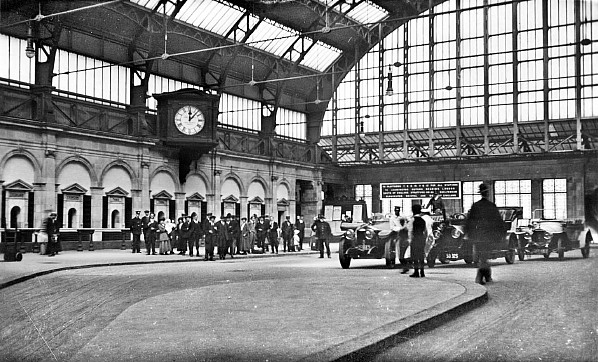 Probably awaiting the arrival of some important passengers at Snow Hill in the 1900s judging by the cars on the forecourt and the local constabulary being in attendance. The car on the left is an early Rolls Royce 40/50hp, the model which in its various forms is better known as the 'Silver Ghost'. The car largely obscured in the centre appears to be a Humber 8 while the that on the right and further back is difficult to identify but looks suspiciously like a Sheffield-Simplex.
Probably awaiting the arrival of some important passengers at Snow Hill in the 1900s judging by the cars on the forecourt and the local constabulary being in attendance. The car on the left is an early Rolls Royce 40/50hp, the model which in its various forms is better known as the 'Silver Ghost'. The car largely obscured in the centre appears to be a Humber 8 while the that on the right and further back is difficult to identify but looks suspiciously like a Sheffield-Simplex. 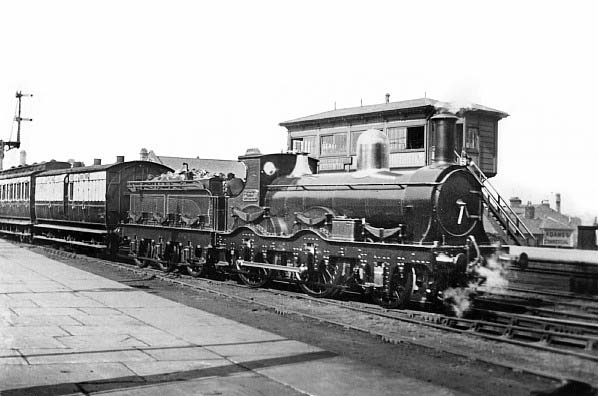
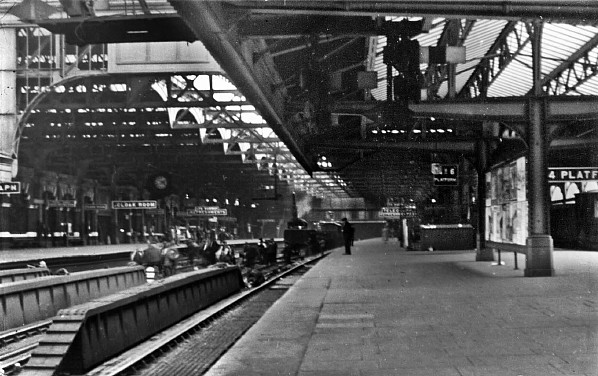 Looking along platform 5 in the 1930s with a steam crane in operation on the centre roads and a gang of workmen just beyond the bridge.
Looking along platform 5 in the 1930s with a steam crane in operation on the centre roads and a gang of workmen just beyond the bridge. 
 Home Page
Home Page